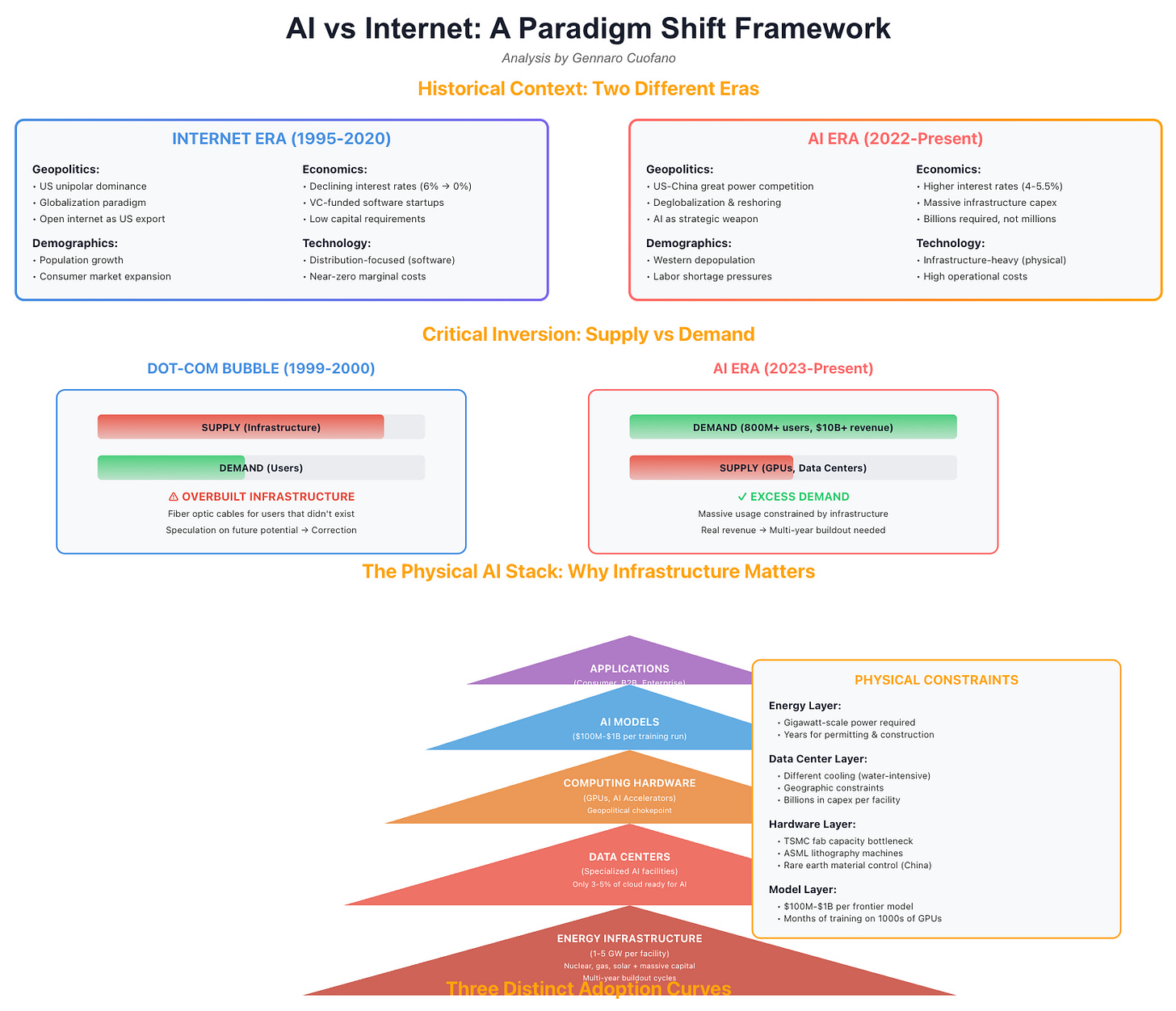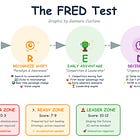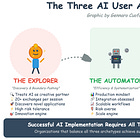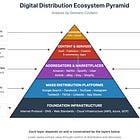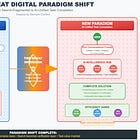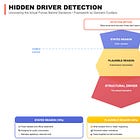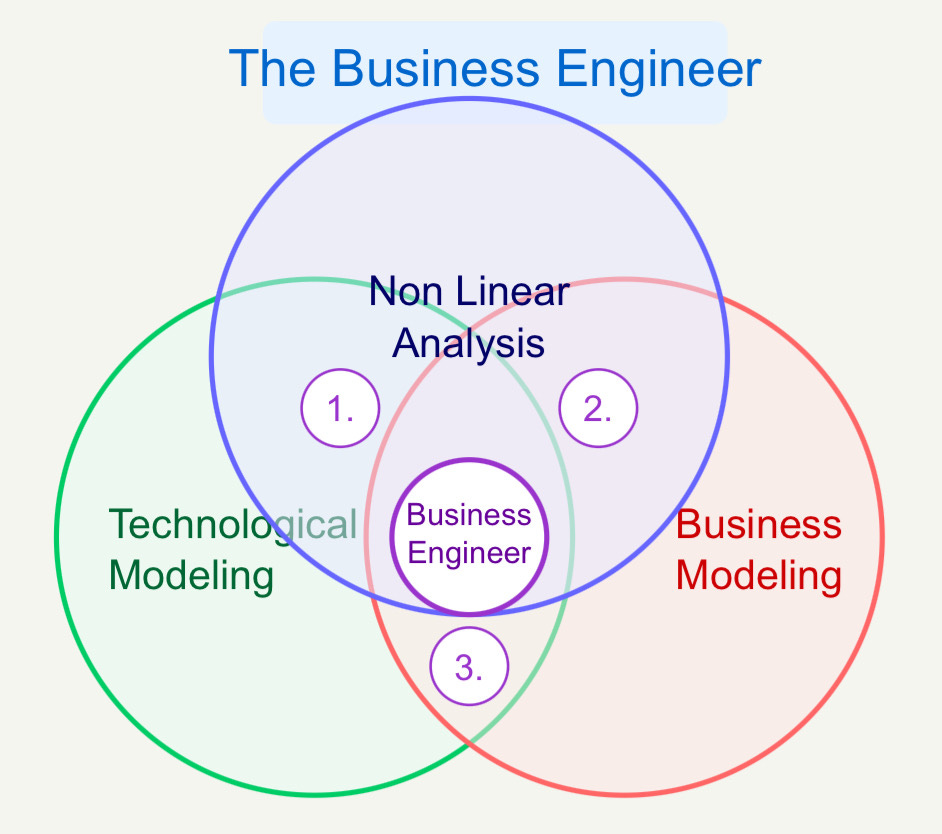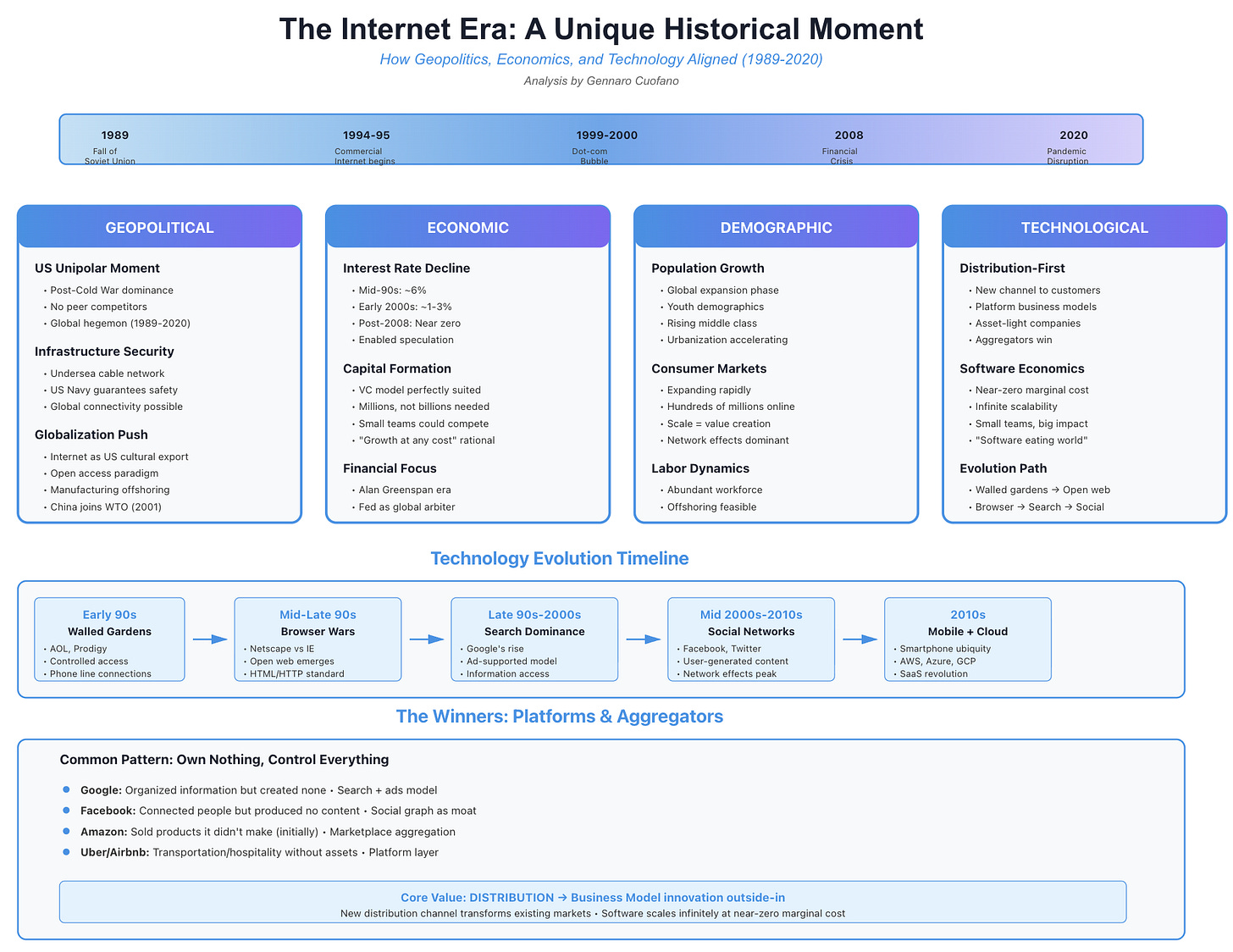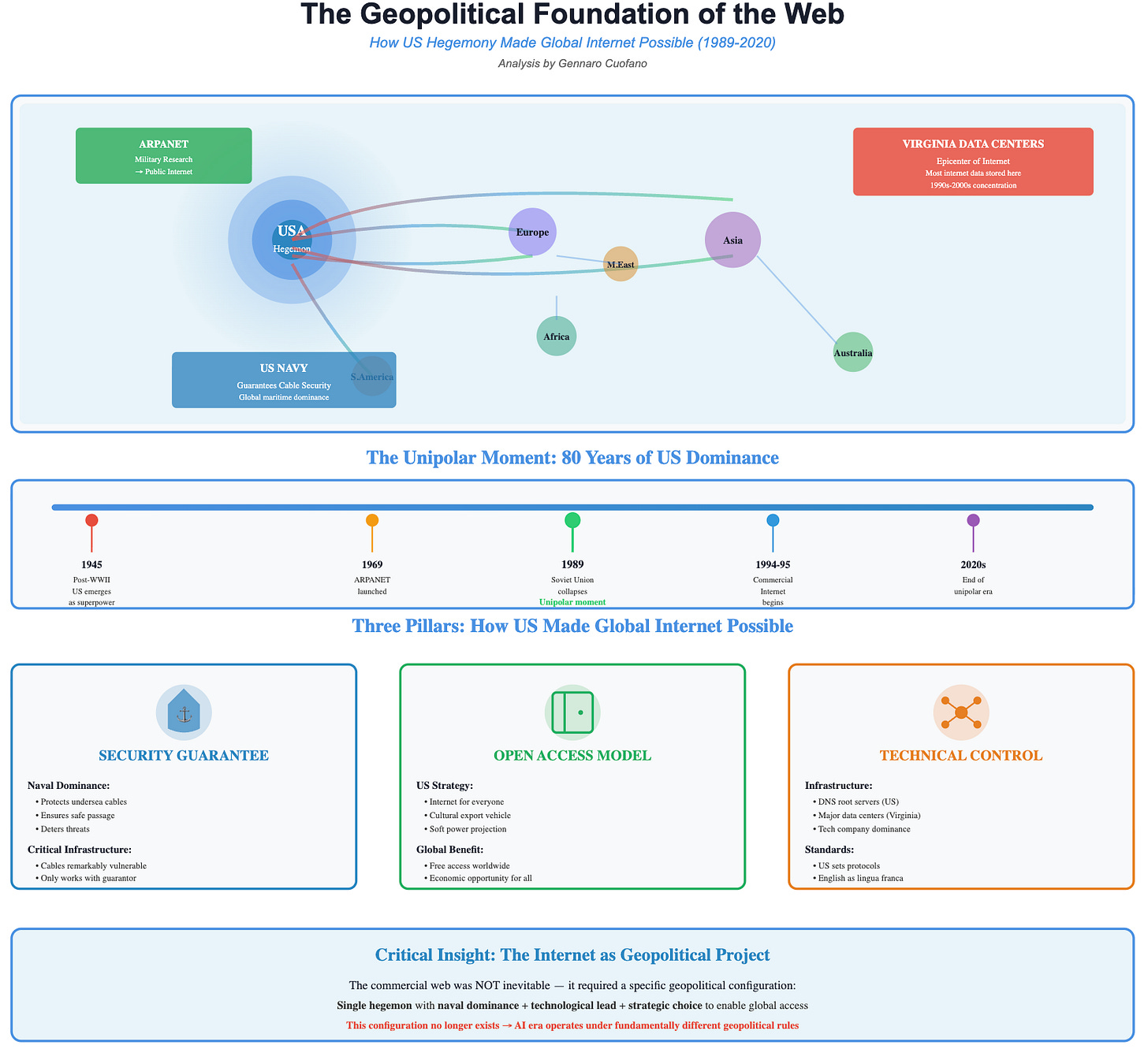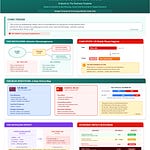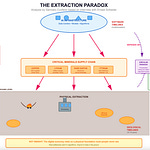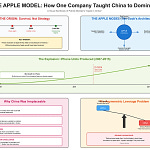The comparison between today’s AI revolution and the late-1990s dot-com bubble has become ubiquitous in business discourse. It’s the wrong comparison. Not because bubbles can’t form around AI—they can and likely will—but because the structural conditions, geopolitical context, economic foundations, and technological architectures are fundamentally different.
This matters because misunderstanding the nature of the transformation leads to catastrophic strategic errors: overbuilding in the wrong places, underinvesting where it counts, and most critically, applying mental models from an era that no longer exists.
Having worked in the AI industry for over a decade, observed the commercial evolution from 2017 onwards, and witnessed firsthand the paradigm shift that ChatGPT represented in late 2022, I’ve come to understand that we’re not experiencing “Internet 2.0” or even a new technological cycle. We’re witnessing the emergence of a different operating system for global commerce and geopolitics—one that requires entirely new frameworks for analysis.
Read Also:
The weekly newsletter is in the spirit of what it means to be a Business Engineer:
We always want to ask three core questions:
What’s the shape of the underlying technology that connects the value prop to its product?
What’s the shape of the underlying business that connects the value prop to its distribution?
How does the business survive in the short term while adhering to its long-term vision through transitional business modeling and market dynamics?
These non-linear analyses aim to isolate the short-term buzz and noise, identify the signal, and ensure that the short-term and the long-term can be reconciled.


